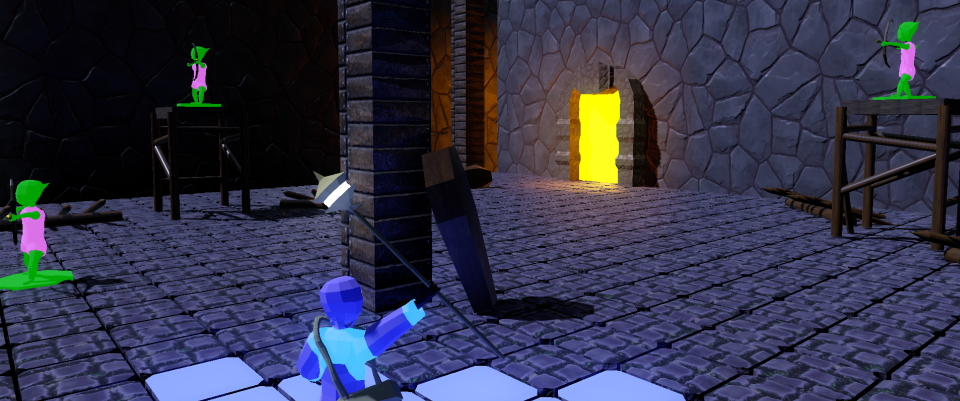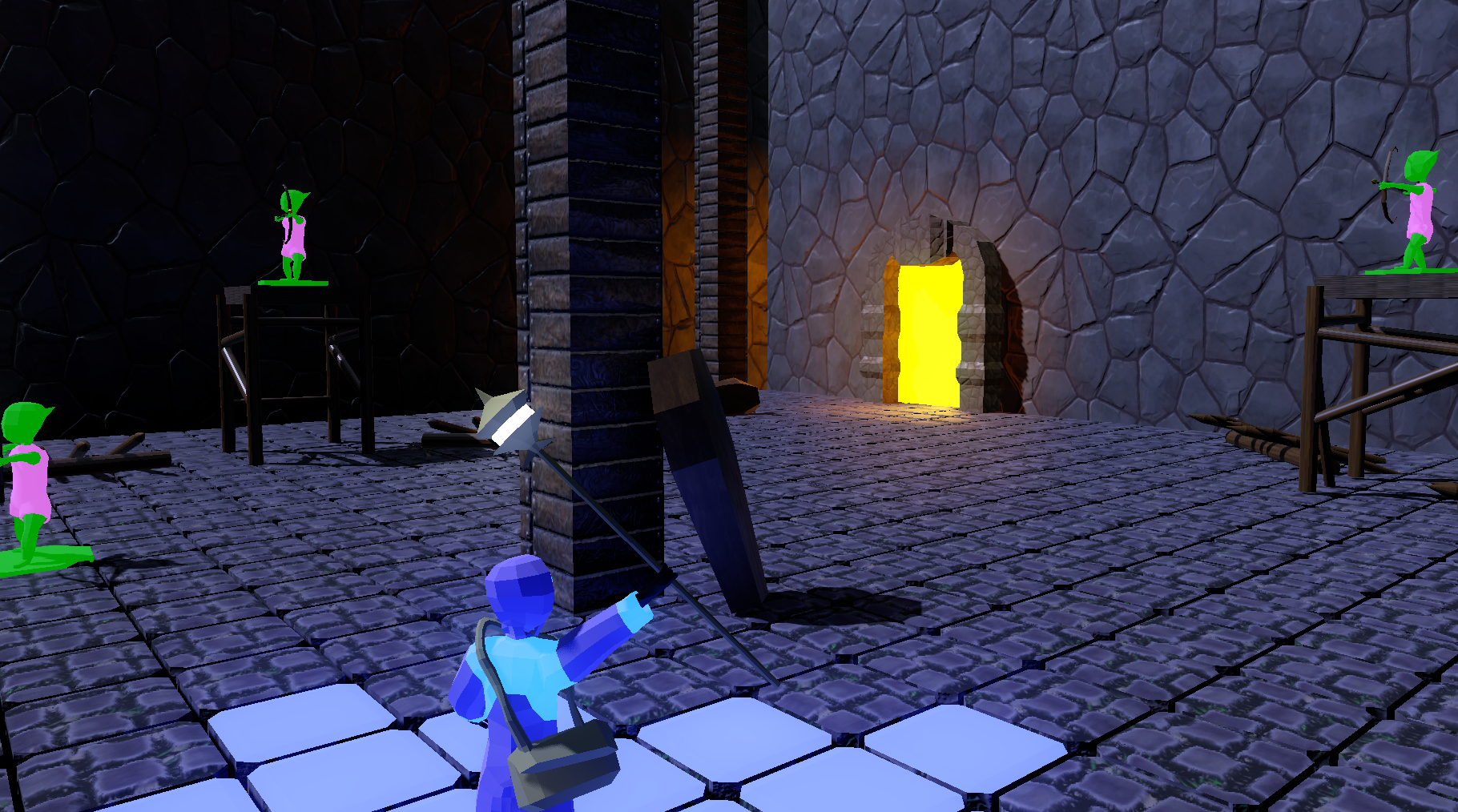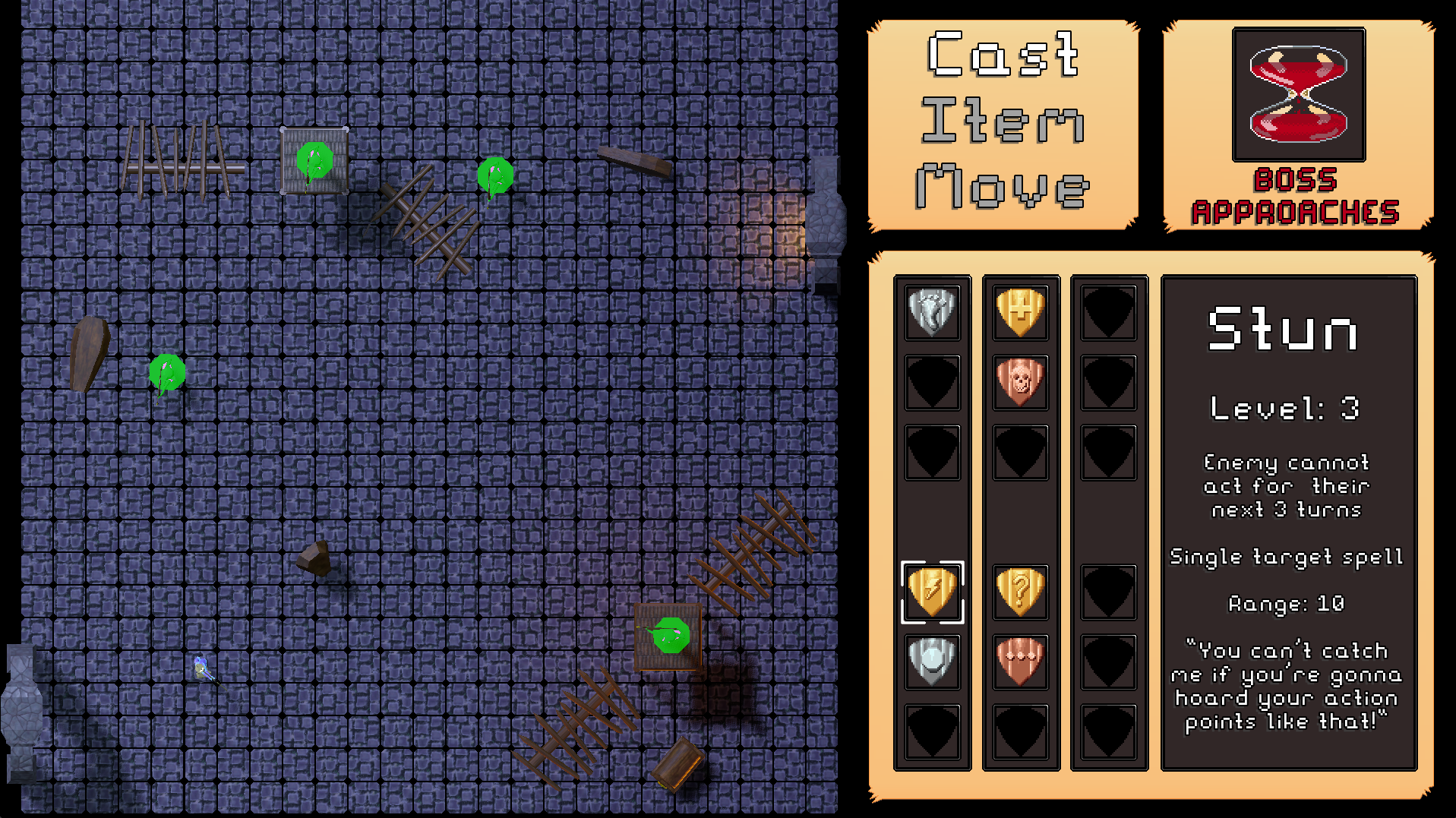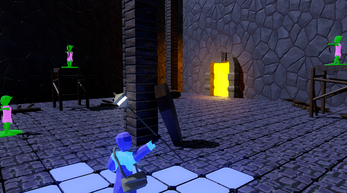
Support Staff (MOCKUP)
A downloadable Mockup
Support Staff (MOCKUP)
Wait, this isn't a game?
No, not until you make it! This is a submission for the Mockup Jam 2024!
Working Story
The Revive buff you cast on yourself finally takes effect as you wake to find the rest of your adventuring party wiped out by the final boss of the dungeon where you now find yourself alone. The spell doesn't work on those who are already dead, and you haven't learned Resurrect just yet... So you have one option: abandon your party and flee the dungeon from the direction you entered.
You hastily cast another Revive buff and begin your trek to safety. You’re not sure where the final boss went, but you’re not about to wait around and find out…
Hopefully your support spells can sustain you long enough to survive this disastrous journey.
Core Mechanics
General
Support Staff is a top-down, grid-based, roguelike puzzler where you can only use support spells (stun, haste, barrier, poison, all the RPG classics) to escape the dungeon you are now incidentally solo-queued for. It leans into video game tropes to advance the story.
A single run consists of the time between respawning at the beginning and dying. Clear maps by surviving enemies and traps spanning the entry door to the exit door on the other side of the map. Within a run, the player will clear maps to climb levels. Reaching the top of the dungeon and escaping the boss is the win condition.
A sense of urgency for the player to solve levels efficiently comes from being pursued by an offscreen boss. Every turn taken will advance a progress bar shaped like an hourglass that resets per level, indicating how much time the player has before the boss catches them and they die. Enemy attacks and activated traps slow you down, dropping more of the "boss approaches" sand (or blood!) when you’re hit. This will be scaled on damage, think about it like an HP meter that also drops as you spend action points. Do your best to ensure you’re able to make it out quickly!
When you run out of turns and the boss arrives, you are sent back to the bottom of the dungeon where you respawn, stronger than the last run (new gear, exp for spells, etc.). Experience (EXP) feeds into a skill tree explained below.
Map Layout

Maps should be generated procedurally following a set of heuristics that scale with difficulty. Enemy pools, traps, loot, map size, and obstacle distribution should scale with depth. The closer you get to the exit at the top, the more time has passed for these elements to have respawned since your party originally cleared the room on the way down, thus becoming more difficult to clear as you approach the surface.
Each floor will have several maps, and the “world map” consists of multiple floors. Maybe 10 maps per floor over 4 floors? Targeting a 30-60 minute run, balancing this comes down to complexity of each map…
Turns
The player will have action points to spend on movement and/or actions on a given turn. Actions can be to use a plethora of spells or items, and movement will be confined to a range based on your character's build/buffs/gear.
Enemy turns will consist of movement and/or a single action per enemy, range permitting.
Enemies
Navigate the enemies that respawned behind your party as you try to escape from whence you came. You're not strong enough to kill all of them, but you can use your spells to slow them down and protect yourself long enough to get out safely.
Enemies would have different susceptibility to different spells, and the player can navigate their skill tree to find the most effective way to neutralize a variety of rooms. Imagine enormous cyclops monsters missing all attacks when their vision is impaired or monsters who excel at speed becoming worthless when hit with a slow spell. Creating a deep pool of enemies with different strengths/weaknesses will be critical in making the roguelike mechanic satisfying.
Unique mini-bosses should be present at each staircase up a level. The room closest to the surface should have the final boss that wiped your party finally catching up to you, and you have to show that you've become strong enough to survive it one more time to make it out.
Traps
Traps should be hidden features that add complexity to procedural puzzle solving. Equipped with spells to detect traps, the player should be given some indication of places where they typically crop up (known conditions like "some chests are trapped" or "these types of tiles sometimes have traps associated with them") and there should be spells to disarm them.
Experience (EXP)
The more distance you have from the boss on a given map, the more EXP you get for that map. If you finish a map with half of the “boss approaching” meter left, you will receive more experience for that map than if you had a quarter left (remember it ticks down as you use actions and take damage).
EXP from the previous run will be used to learn new spells as well as assign spells for the next run. The more EXP you have at the end of the run, the more skills you can learn or apply to the upcoming run. Once a spell is learned, you have it permanently. Once the whole skill tree is unlocked, players can use all of each run’s EXP to try out different skill tree/gear builds. The goal here is to create satisfying advancement through learning spells and gathering gear while leaving room for replayable end-game content (i.e., trying new spell/gear combo builds)..
Skill tree

Skills should be divided by type (e.g., “Offensive” and “Defensive”) and subtype (e.g.,"Crowd Control," "Mobility," or "Damage"). Skills can themselves level up (indicated by bronze, silver, and gold medal skill icons) and leveling them up can lead to unlocking new skills.
So imagine you need Silence (Defensive crowd control spell) at level 3 to unlock Slow, which at level 3 unlocks Stun. Spells would become more powerful (bigger area-of-effect, more potent attribute effects) as they level from bronze to gold.
Once unlocked, skills are available to assign to your character at the start of each run by using EXP gained in your most recent run. The better your last run, the better you can spec your upcoming run. Once your skill tree is all gold, you can spend every drop of EXP on selecting the best skills for that run!
Gear
"Well, now that the damage dealer is dead I can grab this wand, right?"
Gear should be available via chests or scattered about the dungeon. It would impact specific skills (rather than "+5 INT," think "Double Stun Range"), mobility (number of squares moved/turn), or even add action points at higher levels.
Old gear can be stored in an empty chest in the respawn room and would persist between runs.
Death and Respawn
The first thing the player does when embarking on their journey is refresh their Revive buff. When they die, they respawn in the room they died in with their party originally. This allows them to tweak their skill trees and gear as described above.
License
Idea and mechanics included above are licensed under CC-BY-SA 4.0
Credits
In-game font is Maple by Kerri Lake
CC0 Textures from MaterialMaker
- https://www.materialmaker.org/material?id=643
- https://www.materialmaker.org/material?id=618
- https://www.materialmaker.org/material?id=240
All other assets, ideas, etc. made for this jam by ARTEMOOSE GAMES LLC:
Pixel Art by AS and 3D models by ZL
All scenes rendered in Godot 4.0. Go make this game in Godot 4!
Post-credits Bonus Feature
The gif in the downloadable zip shows a bit more of what the dungeon actually looks like in 3D space. It was just a bit big for the main page...
| Status | Prototype |
| Category | Assets |
| Author | Artemoose Games |
| Genre | Puzzle |
| Tags | Dungeon Crawler, Low-poly, Pixel Art, Turn-based |



Leave a comment
Log in with itch.io to leave a comment.